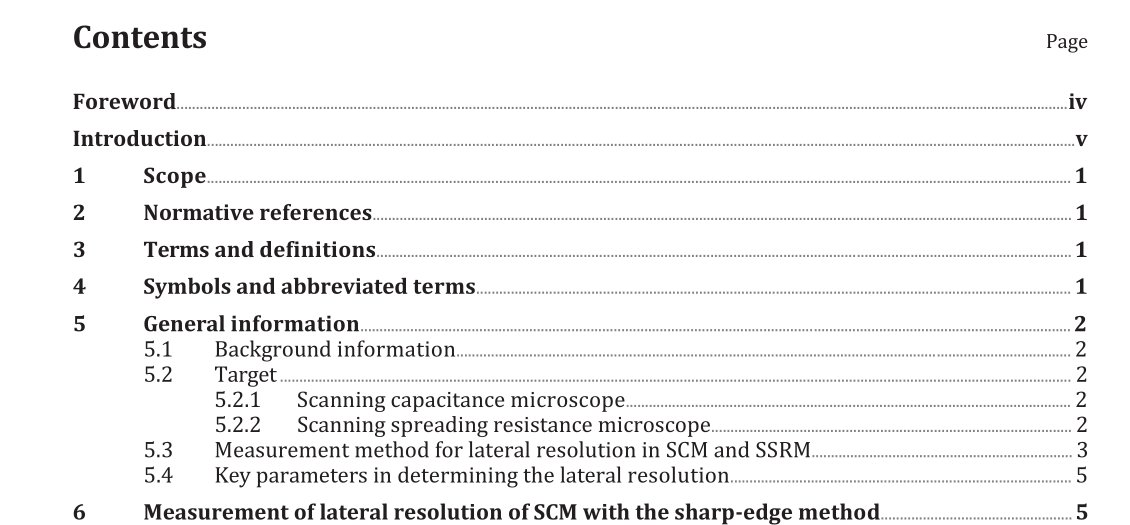BS ISO 13083:2015 pdf download.Surface chemical analysis — Scanning probe microscopy — Standards on the definition and calibration of spatial
1 Scope
This International Standard describes a method for measuring the spatial (lateral) resolution of scanning capacitance microscopes (SCMs) or scanning spreading resistance microscopes (SSRMs),which are widely used in imaging the distribution of carriers and other electrical properties in semiconductor devices. The method involves the use of a sharp-edged artefact.
2 Normative references
The following documents, in whole or in part, are normatively referenced in this document and are indispensable for its application. For dated references, only the edition cited applies. For undated references, the latest edition of the referenced document (including any amendments) applies.
ISO 18115-2, Surface chemical analysis – Vocabulary – Part 2: Terms used in scanning-probe microscopy
3 Terms and definitions
For the purposes of this document, the terms and definitions given in ISO 18115-2 and the following apply.
3.1 electrical scanning probe microscopy
ESPM
SPM mode in which a conductive tip is used to measure electrical properties such as capacitance,resistance, electrical field, etc.
3.2 contact mode
mode of scanning the probe tip over the sample surface, adjusting the relative heights of the probe and sample, in which there is always a repulsive force between the probe and the sample
Note 1 to entry: This mode can be, for example, either the constant-height or constant-force mode.
[SOURCE: ISO 18115-2:2013, 6.35]
5 General information
5.1 Background information
ESPM is a branch of scanning probe microscope that can be used to image an electrical or electronic property of a sample surface using an electrically conducting probe. Since this conductive probe is scanned over the sample surface in the contact mode, its lateral resolution is strongly related to the size and shape of the probe apex. Currently, this can be as small as a few nanometres, enabling sub-10 nanometre spatial resolution to be achieved. Such a high resolution, shown in ESPM images, allows the investigation of the two-dimensional distribution of carriers in nanoscale semiconductor devices.
5.2 Target
There are a number of types of ESPM categorized by the methods of electrical characterization. Among these ESPMs, this International Standard is for SCM and SSRM.
5.2.1 Scanning capacitance microscope
Scanning capacitance microscopy (SCM) is a modification of scanning probe microscopy in which a conductive probe is in contact with the surface of a sample, with an applied AC bias, and scanned across it. SCM characterizes the change in electrostatic capacitance between the sample and the probe on the surface of the sample. SCM uses an ultra-sharp conducting probe made from etched silicon (often coated with Pt/Ir or Co/Cr alloy) to form a metal-insulator-semiconductor (MIS/MOS) capacitor with a semiconductor sample if a native oxide exists on the sample. When the conducting probe is in contact to the surface under an AC bias, generated capacitance variations on the surface can be detected using a GHz resonant capacitance sensor. The probe is then scanned across the semiconductor’s surface in x- and y-axes while the probe is operated under the contact mode.
BS ISO 13083:2015 pdf download
